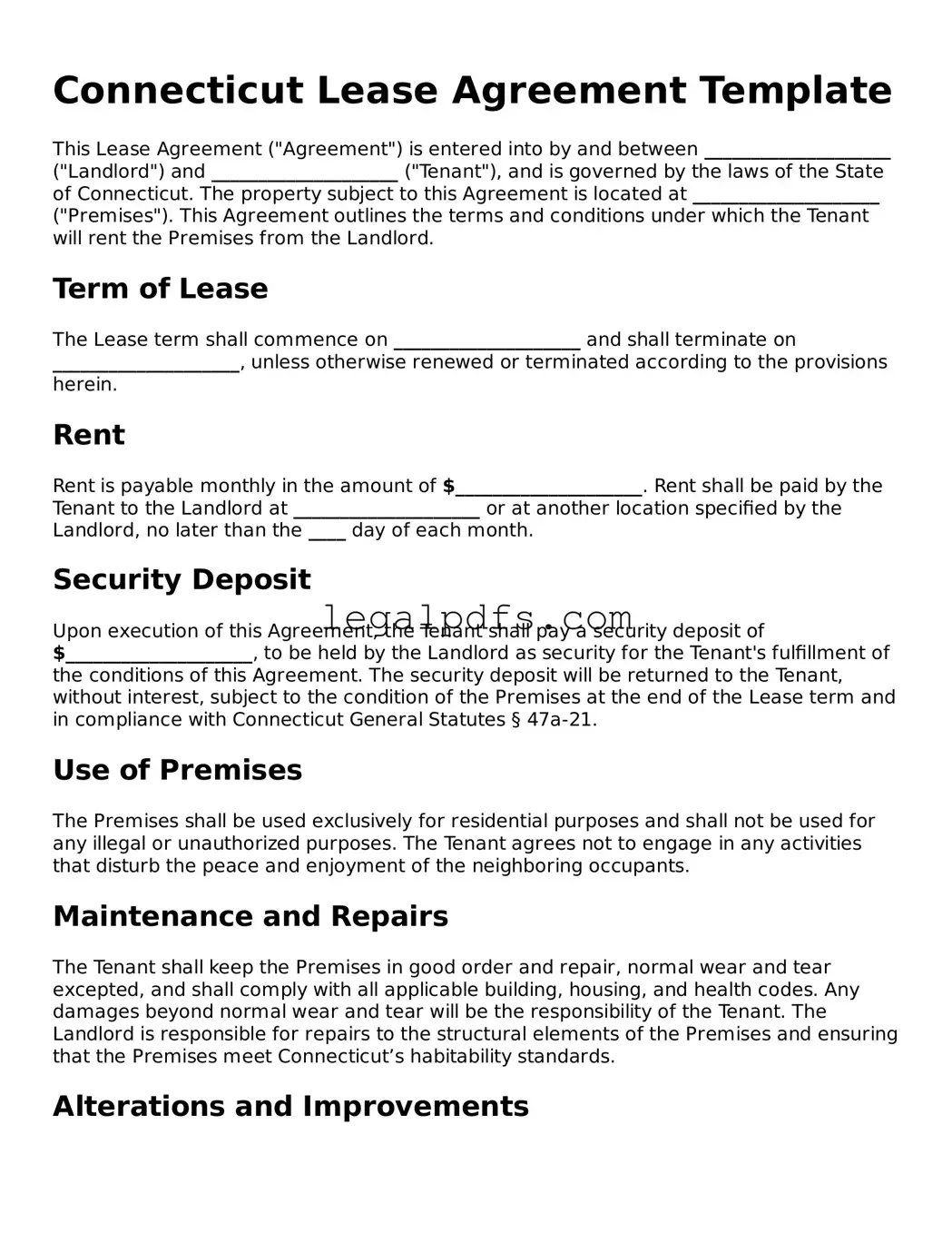Connecticut Lease Agreement Template
This Lease Agreement ("Agreement") is entered into by and between ____________________ ("Landlord") and ____________________ ("Tenant"), and is governed by the laws of the State of Connecticut. The property subject to this Agreement is located at ____________________ ("Premises"). This Agreement outlines the terms and conditions under which the Tenant will rent the Premises from the Landlord.
Term of Lease
The Lease term shall commence on ____________________ and shall terminate on ____________________, unless otherwise renewed or terminated according to the provisions herein.
Rent
Rent is payable monthly in the amount of $____________________. Rent shall be paid by the Tenant to the Landlord at ____________________ or at another location specified by the Landlord, no later than the ____ day of each month.
Security Deposit
Upon execution of this Agreement, the Tenant shall pay a security deposit of $____________________, to be held by the Landlord as security for the Tenant's fulfillment of the conditions of this Agreement. The security deposit will be returned to the Tenant, without interest, subject to the condition of the Premises at the end of the Lease term and in compliance with Connecticut General Statutes § 47a-21.
Use of Premises
The Premises shall be used exclusively for residential purposes and shall not be used for any illegal or unauthorized purposes. The Tenant agrees not to engage in any activities that disturb the peace and enjoyment of the neighboring occupants.
Maintenance and Repairs
The Tenant shall keep the Premises in good order and repair, normal wear and tear excepted, and shall comply with all applicable building, housing, and health codes. Any damages beyond normal wear and tear will be the responsibility of the Tenant. The Landlord is responsible for repairs to the structural elements of the Premises and ensuring that the Premises meet Connecticut’s habitability standards.
Alterations and Improvements
No alterations, additions, or improvements shall be made by the Tenant without the prior written consent of the Landlord. All approved alterations shall become the property of the Landlord upon termination of the Lease.
Subletting
Subletting of the Premises, or any part thereof, is not allowed without prior written consent from the Landlord.
Pet Policy
Pets are ☐ allowed ☐ not allowed. If allowed, a separate pet agreement may be required.
Termination
This Lease may be terminated by either party with a written notice of at least ________ days in accordance with Connecticut General Statutes. Upon termination, the Tenant shall vacate the Premises and return it to the Landlord in the same condition it was in at the beginning of the Lease, normal wear and tear excepted.
Signature Section
Both the Landlord and the Tenant acknowledge receiving, reading, and agreeing to the terms present in this Agreement by signing below:
Landlord's Signature: ____________________ Date: ____________________
Tenant's Signature: ____________________ Date: ____________________
Notices
All notices under this Agreement shall be in writing, and shall be sent to the parties' last known addresses, unless otherwise specified in this Agreement.
